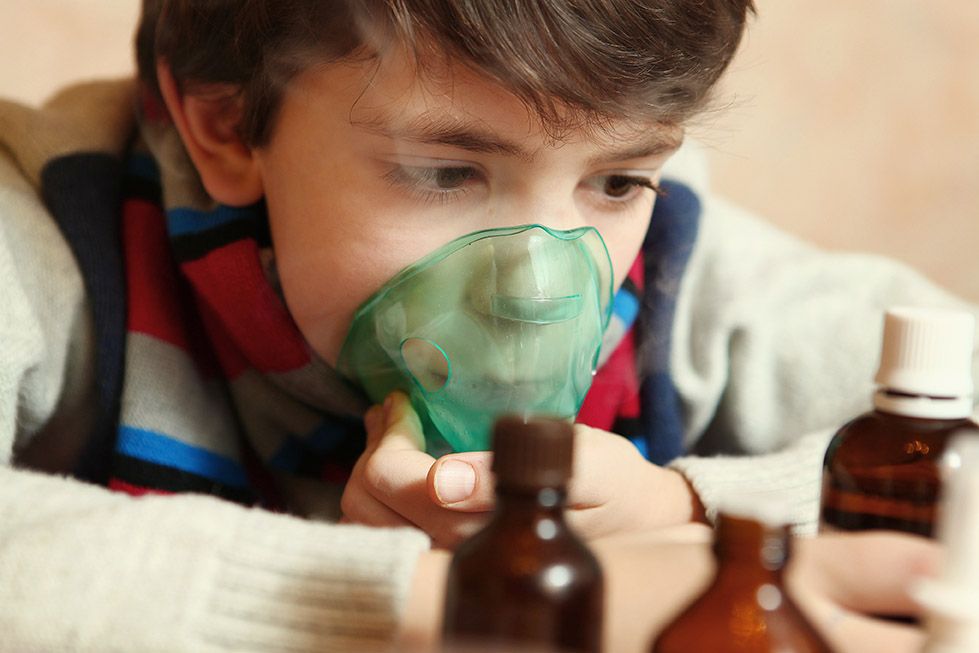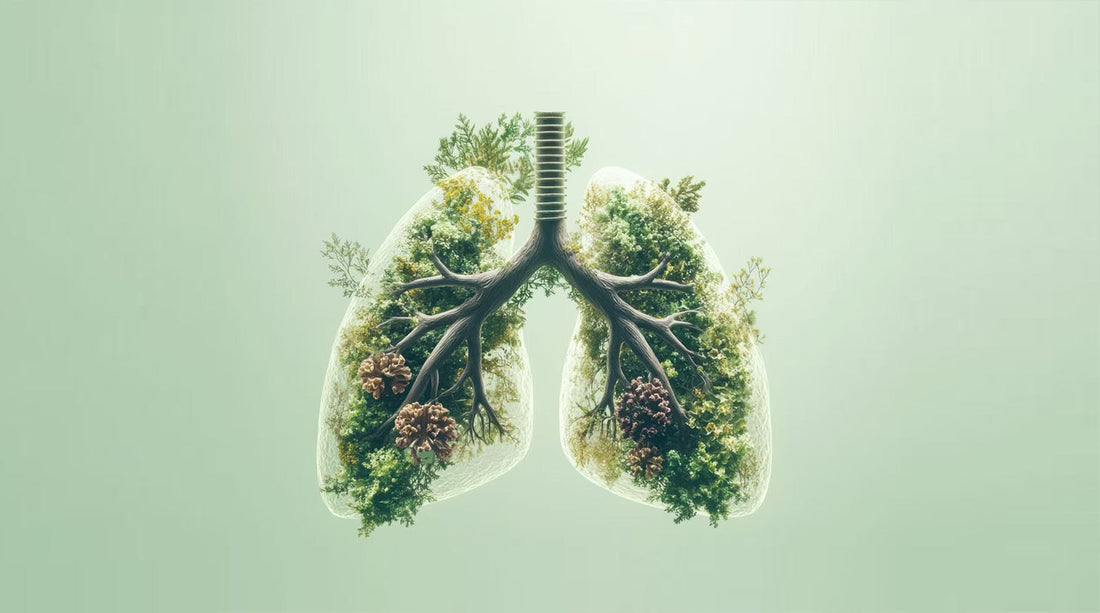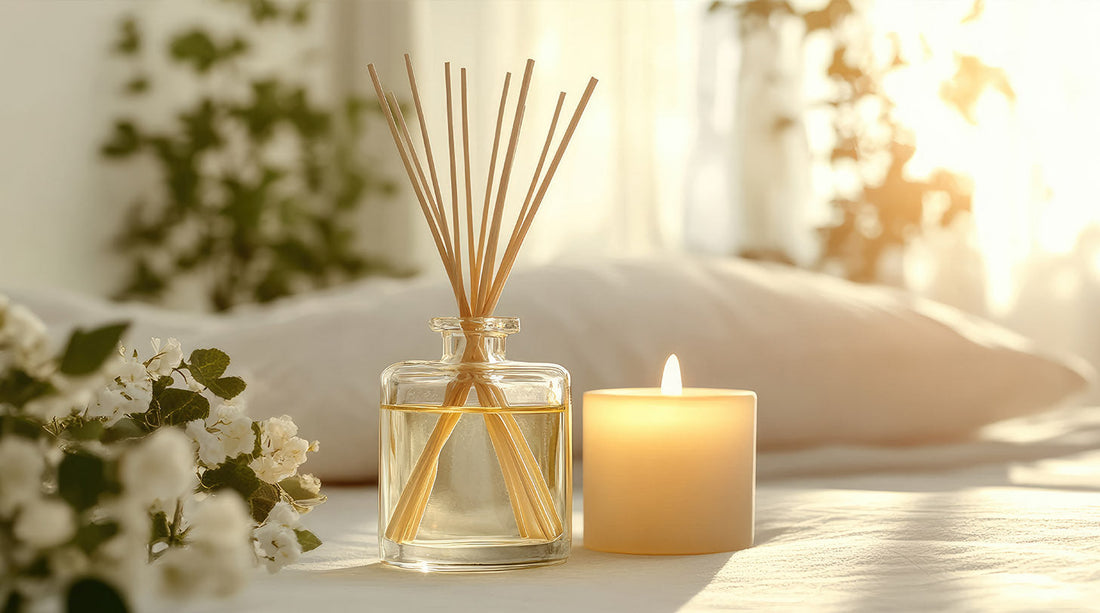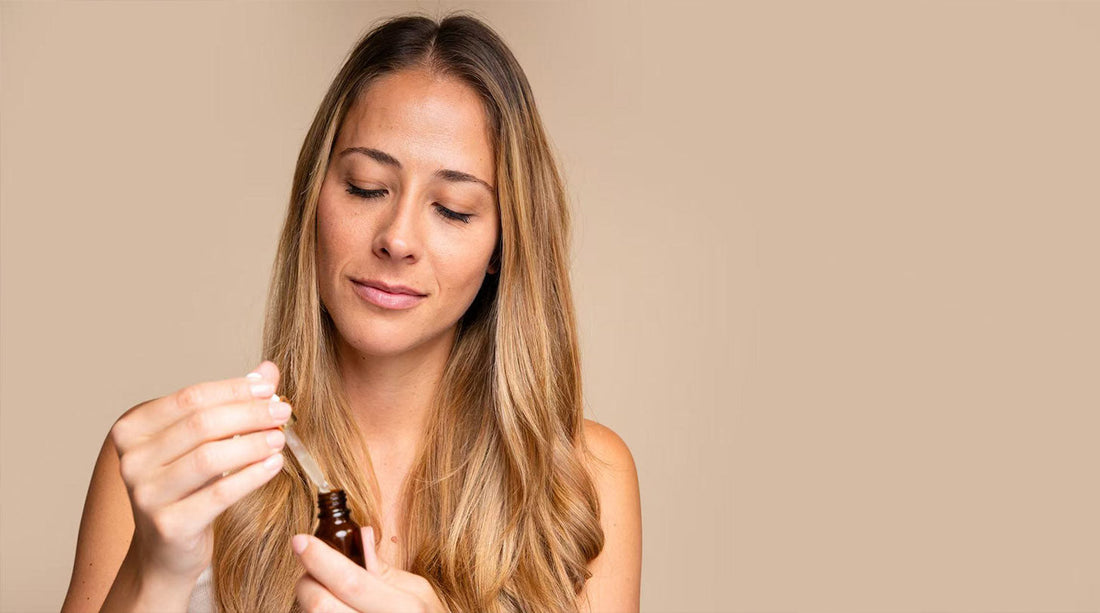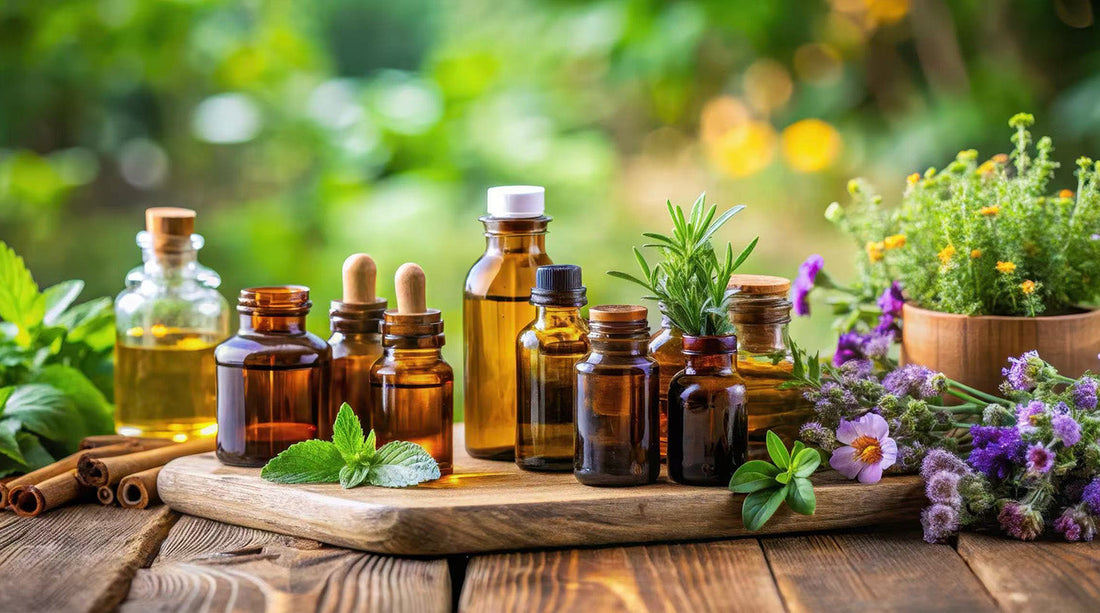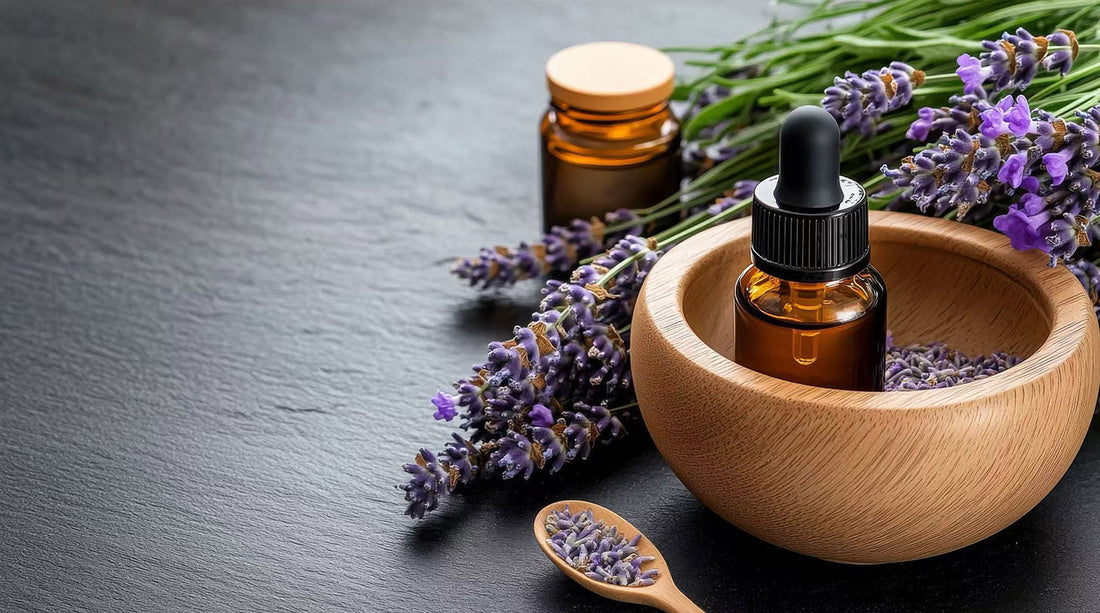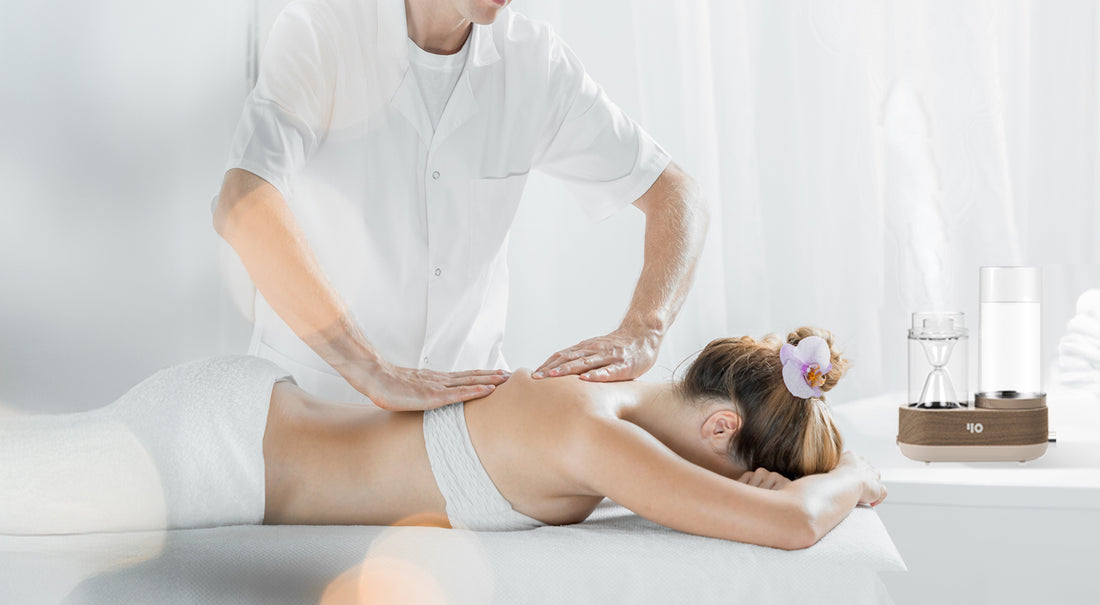Blog
What Is the Safest Humidifier for Baby?
What Is the Safest Humidifier for Baby? Your baby's skin is dry, their nose is stuffy, and someone told you a baby humidifier would help. But now you're staring at dozens of options wondering which cool mist humidifier or steam humidifier won't become a mold factory in your nursery. We'll break down what actually matters for safety so you can stop second-guessing and start helping your little one breathe easier. Why Parents Use Humidifiers (And Why Safety Comes First) Dry air makes everything harder for babies. You've probably noticed your little one waking up with a stuffy nose, developing dry skin patches, or coughing more at night. A humidifier for baby rooms can genuinely help with these issues, but the tricky part is knowing which one is actually safe. Here's what the right humidity level does: 1. Clears stuffy noses faster. Moisture thins out thick mucus so it drains naturally instead of blocking tiny nasal passages. 2. Stops dry, itchy skin. Proper humidity keeps your baby's delicate skin from cracking and getting irritated. 3. Reduces nighttime coughing. Moist air soothes scratchy throats so everyone sleeps better. 4. Keeps the air comfortable at 40-50% humidity. This sweet spot prevents both dry air problems and mold growth. But here's the worry: what if your nursery humidifier spreads bacteria or creates other problems? Some humidifiers can actually make the air quality worse if they're the wrong type. 3 Hidden Dangers in Baby Humidifiers 1. The Germ Problem Similar to a water bottle left in your car, water in a tank quickly becomes slimy. Within 24 hours, mold and bacteria begin to proliferate. The main problem is that a lot of cool mist humidifiers release this tainted water as a fine mist into the atmosphere. Throughout the night, your infant inhales it. Babies are more susceptible to illness than adults, so rather than improving your child's breathing, you may be contributing to the spread of viruses. 2. The Problem of White Dust Near your humidifier, do you see that fine white powder on the furniture? These are minerals that were released into the atmosphere from tap water. Calcium and other minerals are broken down into microscopic particles that float through the air by ultrasonic cool mist humidifiers. These can irritate your baby's airways because they are inhaled by their lungs. 3. The Burn Risk (Mostly Fixed Now) Old vaporizers could burn kids badly, and that fear still stops parents from considering steam humidifiers. The difference is that contemporary steam humidifiers chill the steam to roughly 50°C before releasing it, making it warm like shower steam rather than hot like boiling kettle steam. While maintaining the advantages of boiling, germ-free water, models with "temperature control" or "safe-touch steam" have resolved the long-standing burn issue. Types of Baby Humidifiers: What You Need to Know Cool Mist Ultrasonic Humidifiers Ultrasonic humidifiers vibrate water so fast that it turns into a fine, cool mist. Parents like them because they're nearly silent and use little electricity. The problem: the tank needs daily cleaning or bacteria spreads into your nursery air. They also leave white dust everywhere unless you use distilled water. If you skip cleaning for a few days, you're spraying germs into your baby's room. Best for: Parents who can commit to daily scrubbing and buying distilled water. Evaporative Humidifiers Evaporative humidifiers blow air through a wet filter, and water naturally evaporates into the room. They can't over-humidify (the air only takes what it needs) and don't create white dust. The downside: the wet filter grows mold and needs replacing every week or two. The fan can also be noisy during sleep. While safer than ultrasonic models, buying filters regularly gets annoying and expensive. Best for: Parents okay with weekly filter changes and some fan noise. Steam Humidifiers (Warm Mist) Steam humidifiers boil water like a kettle, then release steam into the room. Boiling kills 99.9% of germs naturally—no chemicals or daily scrubbing needed. There's no white dust, and regular tap water works fine. The worry: "Won't hot steam burn my baby?" Modern steam humidifiers cool the steam to 122°F (50°C) before it comes out—warm like shower steam, not scalding. Even if your baby got close, it wouldn't burn them. You get the cleanest mist with the least daily work—just rinse and refill. Best for: Busy parents who want safe, low-maintenance humidification. Quick Comparison Feature Cool Mist Ultrasonic Evaporative Steam (Warm Mist) Kills germs? No (unless you clean daily) Somewhat (filter dependent) Yes (boiling does it) White dust problem? Yes (unless using distilled water) No No Daily work Clean the whole tank Change filter weekly Just rinse and refill Noise Almost silent Fan hum Quiet Extra costs Distilled water adds up Filters every 1-2 weeks None Burn risk None None None (with modern 50°C models) If you want a nursery humidifier that cleans itself and doesn't need daily attention, modern steam humidifiers with temperature control are your best bet. Your Baby Humidifier Safety Checklist When you're comparing models online or standing in the store aisle, focus on the must-haves first—those keep your baby safe. ✅ The 7 Must-Haves (Don't Skip These) Safety Feature What to Look For Why It Matters 1. Germ Protection Boils water OR has UV light Stops bacteria from spreading into the air your baby breathes 2. Safe Temperature Steam comes out at 50°C or lower (for steam humidifiers) Warm to touch, not hot—won't burn if baby gets close 3. Easy Cleaning Wide opening—your hand fits inside If you can't reach in, you can't clean it properly 4. Right Size Covers 300+ square feet Small units won't humidify the whole nursery 5. Auto Shut-Off Turns off when water runs out Prevents overheating and fire risk 6. Quiet Under 35 decibels Won't wake your baby (quieter than a whisper) 7. Stable Base Heavy, wide bottom Won't tip over when toddlers bump into it Before you buy any humidifier for baby use, ask yourself: ☐ Does it sterilize the water somehow? ☐ Can I actually clean it without tools? ☐ Will it cover my baby's room size? ☐ Does it have the 7 must-haves above? If you answered "no" to any of these—keep shopping. A baby humidifier loaded with fancy features means nothing if it doesn't nail the safety basics first. For more on what makes a humidifier truly safe and effective, see our ultimate guide to healthy humidification. Y&O Steam Plus: Why This Steam Humidifier Stands Out The Y&O Steam Plus steam humidifier is designed specifically for families with babies and addresses the exact safety concerns parents worry about most. Here's what sets it apart: Complete sterilization process: Heats water to 212°F, killing 99.9% of germs, then cools steam to a comfortable 122°F through dual air ducts before releasing it into your home. Large capacity, easy maintenance: The 10-liter system uses two removable 5-liter tanks with wide openings that make weekly cleaning quick and simple. Whole-home coverage: With whole house humidifier capacity, it effectively humidifies spaces up to 1,000 square feet—ideal for bedrooms, living rooms, or nurseries. No ongoing costs: Filterless design means nothing to replace, just regular cleaning with water and vinegar. Smart automation: Built-in humidity sensor with sleep, auto, and powerful modes adjusts output automatically to maintain optimal levels. The best humidifier keeps air clean without creating extra work—and steam humidifiers like the Y&O Steam Plus deliver on both counts. How to Use Your Baby's Humidifier Safely Getting a humidifier for babyis one thing—using it correctly is another. Here's how to set it up and maintain it so it actually helps instead of causing new problems. Where to Place It Keep it 4-8 feet away from the crib. You want moisture spreading through the room, not blowing directly into your baby's face. Too close can make their bedding damp. Put it on a dresser or sturdy table. Elevating it helps the mist spread better and keeps it out of reach of curious toddlers. Make sure the surface is stable—you don't want it tipping over. Point it away from walls and furniture. If mist hits the wall constantly, you'll get mold or water damage. Aim it toward the center of the room. Refilling Your Humidifier Use the right water. For steam humidifiers, regular tap water is fine since boiling purifies it. For cool mist humidifiers, always use distilled water to prevent white dust and mineral buildup. Don't top off—empty first. Each time you refill, empty any remaining water first. Don't just add fresh water to old water. Even a steam humidifier can develop bacteria in standing water that didn't get boiled yet. Fill to the line, not beyond. Overfilling can cause leaks or prevent proper operation. Follow your model's maximum fill line. Wipe the tank opening. Before putting the tank back, wipe around the opening and base connection with a clean cloth to remove any residue. Daily Maintenance (Takes 2 Minutes) Every morning: 1. Empty any leftover water from the tank 2. Give it a quick rinse with clean water 3. Refill with fresh water Why dump yesterday's water? Because water sitting around grows bacteria fast—even in a steam humidifier. Starting fresh each day keeps things cleaner. Weekly Deep Clean (Takes 10 Minutes) Once a week: 1. Fill the tank halfway with white vinegar or citric acid and water 2. Let it sit for 20-30 minutes to break down mineral buildup 3. Scrub all the corners and crevices with a soft brush 4. Rinse thoroughly until there's no vinegar smell left 5. Let it air dry completely before refilling This prevents mineral deposits and keeps the unit running efficiently. What Water to Use For steam humidifiers: Regular tap water works fine. The boiling process purifies it and kills any contaminants, so you don't need to buy distilled water. For cool mist humidifiers: Use distilled water only. Tap water will create white dust all over your nursery furniture and put mineral particles in the air. How to Know It's Working Properly The room should feel comfortable, not sticky. If surfaces feel damp or clammy, you're over-humidifying. Check your windows. See condensation or water droplets forming? That means humidity is too high. Turn it down or run it less often. Get a hygrometer (they cost about $10-15 online). Keep the nursery between 40-50% humidity. Below 30% is too dry. Above 60% encourages mold growth. Your baby should breathe easier. Less congestion, fewer coughs at night, and skin that doesn't look dry or cracked are good signs it's helping. Safety Checks While Running Listen for unusual sounds. Gurgling is normal. Grinding, rattling, or buzzing means something's wrong—turn it off and check for issues. Watch for leaks. Check around the base daily. Leaks mean the tank isn't seated properly or a seal is damaged. Feel the mist temperature. For steam humidifiers, the output should be warm (around 122°F/50°C), not hot. If it feels scalding, stop using it immediately. Check the cord. Make sure the power cord isn't frayed, positioned where someone could trip, or creating a hazard. A baby humidifier only works well when you maintain it properly. But if you choose a steam humidifier, you're already doing less work than other types. Your Questions About Baby Humidifiers Answered Q1: Can I run the humidifier every night? Yes, as long as you keep the humidity between 40-50% and maintain it regularly. Running it every night is fine—just don't let the room get damp or you'll create mold problems. Q2: Is it safer to use warm or cool mist? Modern steam humidifiers with temperature control are safest because they kill germs through boiling and need less daily maintenance. Cool mist humidifiers require daily scrubbing or they spread bacteria. Q3: Is distilled water truly necessary? It depends on your type. Steam humidifiers boil the water, so regular tap water works fine. Ultrasonic cool mist humidifiers need distilled water or they'll create white dust everywhere. Q4: What is the maximum distance from the crib? Keep it away from the crib by at least 4 feet. Instead of blowing directly into your baby's face and getting their mattress wet, you want the wetness to permeate the entire space. Q5: How frequently should I really clean it? Cool mist types need daily rinsing and deep cleaning every 3 days. Steam humidifiers need daily rinsing but only weekly deep cleans since boiling handles sterilization. Q6: Will it create too much moisture in my baby's room? Not if you monitor it with a hygrometer (about $10). If you see condensation on windows or the room feels sticky, turn it down—you're over-humidifying. Q7: Can I add essential oils to my baby's humidifier? Most manufacturers say no, and pediatricians don't recommend it for babies under 6 months. Essential oils can irritate tiny airways and damage the humidifier's components. Q8: What if my baby has a cold—should I use it more? Yes, proper humidity helps thin mucus and makes breathing easier during congestion. Just stick to the 40-50% range—more isn't better and can make respiratory issues worse. Q9: How do I know if the humidity is helping my baby? Your infant should sleep better, have softer skin, and have less congestion. Make sure you aren't over-humidifying if symptoms worsen or if new problems (such as increased coughing) arise. Choosing Your Baby Humidifier with Confidence After comparing cool mist humidifiers, evaporative humidifiers, and steam humidifiers, the winner for most families is clear—modern steam with temperature control. It kills germs naturally, needs less maintenance, and eliminates white dust problems. The safest baby humidifier is the one you'll actually use correctly, so pick one that makes your life easier. If you want a nursery humidifier that does the safety work automatically, the Y&O Steam Plus checks all the boxes.
Explore NowAre essential oils safe for cats and dogs?
As pet owners, we often seek natural remedies to enhance the well-being of our beloved furry friends. Essential oils have gained popularity in recent years for their potential therapeutic benefits, but are they safe for our pets? In this comprehensive guide, we'll explore the dos and don'ts of using essential oils around cats and dogs, along with a curated list of pet-friendly oils and those to avoid.Please note: The APVMA regulate veterinary medicines in Australia, the following information is written using the APVMA guidelines. Understanding Pet Sensitivity Before delving into the world of essential oils for pets, it's crucial to grasp the differences in sensitivity between cats, dogs, and humans. Cats, in particular, possess a unique physiology that makes them more susceptible to adverse reactions from essential oils. Unlike dogs and humans, cats lack a specific liver enzyme responsible for metabolizing certain compounds found in essential oils. As a result, even small amounts of exposure to certain oils can lead to toxicity and health complications in felines. This is the safest way to introduce essential oils to pets, as it allows them to control their exposure by leaving the room if they find the scent too strong. On the other hand, while dogs are generally less sensitive to essential oils than cats, they can still experience adverse reactions if exposed to high concentrations or inappropriate oils. Therefore, it's necessary to exercise caution and consult with your veterinarian before introducing any new essential oil to your pet's environment. Safe Application Methods When using essential oils around pets, the key is moderation and mindful application. Here are some safe methods for incorporating essential oils into your pet's routine: Diffusion: Diffusing essential oils in a well-ventilated area is one of the safest ways to introduce scents to your pets. Start with a few drops of pet-friendly oil such as Lavender Essential Oil in a diffuser and allow your pet to acclimate to the scent. Monitor their behavior, and if they show any signs of discomfort, remove them from the area. If your pet is uncomforable with the scent then they will generally remove themselves from the area, this is a good indication to stop using this essential oil and refrain from using again around your pet. Bandana or Scarf: Another gentle way to introduce essential oils to your pet is by applying them to a bandana or scarf. Simply add a few drops of pet-friendly oil such as Frankincense Pure Essential Oil to the fabric and allow your pet to wear it gradually. This method allows for controlled exposure and gives your pet the option to remove themselves from the scent if it becomes overwhelming. Topical Application: When applying essential oils topically to pets, it's crucial to dilute them properly in a carrier oil to avoid skin irritation or sensitization. Mix a few drops of pet-friendly essential oil with a tablespoon of carrier oil such as coconut, jojoba, or sweet almond oil. Gently massage the diluted mixture onto your pet's skin or fur, avoiding sensitive areas like the eyes, nose, and mouth. When in doubt, it's always best to consult with your veterinarian before using any essential oil around your pets. Pet-Friendly Essential Oil Blends We've done the hard work for you! Three curated Essential Oil Blends developed in line with APVMA guidelines launching in March 2025. Sign up below to be notified first. Pet-Friendly Essential Oils Not all essential oils are safe for pets. Here's a list of pet-friendly oils that can be used safely around cats and dogs: Lavender (Diffusion, Topical) Chamomile (Diffusion, Topical) Frankincense (Diffusion, Topical) Copaiba (Diffusion, Topical) Cedarwood (Diffusion, Topical) Ylang-ylang (Diffusion in small amounts) Bergamot (Diffusion. insmall amounts) Clary Sage (Diffusion, Topical) Chamomile (Diffusion, Topical) Helichrysum (Diffusion, Topical) Sandalwood (Diffusion, Topical) Vetiver (Diffusion, Topical) Shop Pet Safe Oils Essential Oils to Avoid Certain essential oils can be toxic to cats and dogs and should be avoided entirely. Here's a list of oils to steer clear of: Geranium (Harmful to Cats) Jasmine (Harmful to Cats) Rose (Harmful to Cats) Tea Tree Oil (Harmful to Dogs and Cats) Peppermint Oil (Harmful to Dogs and Cats) Wintergreen Oil (Harmful to Dogs and Cats) Pine Oil (Harmful to Dogs and Cats) Citrus Oils (d-limonene) (Harmful to Dogs and Cats) Cinnamon Oil (Harmful to Dogs and Cats) Clove Oil (Harmful to Dogs and Cats) Eucalyptus Oil (Harmful to Dogs and Cats) Oregano Oil (Harmful to Dogs and Cats) Thyme Oil (Harmful to Dogs and Cats) Anise Oil (Harmful to Dogs and Cats) Basil Oil (Harmful to Dogs and Cats) While essential oils can offer potential benefits for pets, it's crucial to approach their use with caution and respect for your pet's individual sensitivities. Stick to pet-friendly oils and safe application methods, and always monitor your pet for any adverse reactions. When used responsibly, essential oils can be a valuable addition to your pet's wellness routine, enhancing their environment and promoting their overall health and happiness. When in doubt, it's always best to consult with your veterinarian before using any essential oil around your pets. All information provided in this article is a general guide, specific information relating to your pet can be obtained by your veterinarian.
Explore NowAre Oil Diffusers Safe for the Lungs? Facts to Know
Diffusing essential oils in your home can create a relaxing and calming atmosphere. Our sense of smell is extremely powerful, so it’s no wonder diffusers have become so popular. Even the faintest scent can create a physical or emotional response, just like how the smell of freshly baked bread can bring back childhood memories, or how the smell of a perfume can remind you of someone you used to know… Diffusers help spread the lovely aroma of essential oils around your home. But are oil diffusers safe for your lungs? It all depends on how you use them, so let us help break it down for you! Using Essential Oils in Your Oil Diffuser What are essential oils? Essential oils are different from synthetic perfumes and fragrances because they are completely natural. Essential oils are highly concentrated liquids extracted from plants or resins. They are very potent, so a little goes a long way. But how do you use them safely? Here are a few key safety points to remember: As a general rule, ingesting essential oils is not safe. Using essential oils topically on your skin may be fine, but the essential oil has to be diluted with a carrier oil first. Diffusing essential oils is a great way to enjoy the benefits of aromatherapy, and it is safe for most people. Because a diffuser spreads the fine particles of the essential oil into the air, it is a great way to safely enjoy the benefits of essential oils. Are Oil Diffusers Good for Your Lungs? Essential oils have been used for centuries in traditional practices like Ayurveda or Chinese medicine. Traditionally, essential oils, herbs and plants have been used in steam inhalation, saunas, warm baths and massages. People have been aware of the benefits of aromatherapy for thousands of years. But it’s not until recently that there have been scientific studies on the effectiveness and benefits of aromatherapy. Although this is quite a new field of study, there are a few studies that investigate the benefits of diffusing essential oils for the respiratory system.Here are some of the most popular oils that have been studied for their health benefits! Eucalyptus Eucalyptus is a calming aroma that has an airy and fresh scent. Eucalyptus blends well with citrusy scents like grapefruit or lemongrass for an uplifting and energising blend. It also works great on its own and it’s often used in spas to create a calming atmosphere.Eucalyptus essential oil is a common treatment for symptoms of the common cold such as coughing or a stuffy nose. Studies show that Eucalyptus may be a safe and effective way to treat certain respiratory symptoms.Try diffusing Eucalyptus essential oil to reduce the symptoms of a winter cold! Frankincense Frankincense has been used for centuries in religious and spiritual ceremonies. Used to create a sense of peace and relaxation, frankincense has a warm and spicy aroma that can be described as clean or fresh.Traditionally (before there were diffusers), frankincense was used in steam inhalation, baths and massages to treat respiratory issues. The boswellic acids found in frankincense have been shown to reduce and prevent inflammation in chronic inflammatory diseases like asthma, with no reported severe side effects.Try diffusing this oil blend for a refreshing aroma to support clear breathing!3 drops Frankincense2 drops Eucalyptus1 drop Rosemary1 drop Spruce Sweet Orange The soft fragrance of citrus is uplifting and energising, and sweet orange is both sweet and fresh. If you love citrus, then sweet orange essential oil will make your home smell like a citrus haven. Imagine the scent of freshly picked oranges to wake you up in the morning!Sweet orange essential oil has been used in studies to treat anxiety, and the results have been quite promising. In one study, diffusing sweet orange essential oil appeared to have an anxiety-reducing effect that also made the participants feel more energetic.Use sweet orange essential oil to make a citrus blend that awakens your spirit and invigorates your senses!4 drops Sweet Orange3 drops Bergamot2 drops Frankincense How to Safely Use Essential Oils To ensure you are using your oil diffuser in a way that’s safe for your lungs, here are a few things to keep in mind: Start slowly by using less oil than recommended to see how your body reacts. Keep a window open to maintain a healthy airflow. Try different oils to find the ones that work best for you. Start with a lighter oil, like sweet orange or lemon for example, and then start to incorporate more essential oils once you feel more confident. Learn about essential oils. Educate yourself on how different essential oils work to make sure you have the knowledge you need to safely diffuse essential oils in your home. Talk to your doctor before you start using a diffuser if you’re pregnant or if you have any medical conditions. If you notice an allergic reaction such as coughing or sneezing, stop diffusing essential oils and consult your doctor. If you have pets, you can read more here about how to diffuse essential oils safely around your pet. And if you have young children, you can read more about the safety of diffusing essential oils here. But What About Side Effects? Aromatherapy has many benefits. Diffusing essential oils can help calm or energise you and create a wonderful atmosphere in your home. Every essential oil has different benefits and uses. But are oil diffusers bad for your lungs?Most of the adverse effects reported in the studies on aromatherapy were from skin irritation due to essential oils having been applied topically (to the skin) and also consumed (which we don’t recommend). So most of the side effects that were reported were the consequence of the essential oils not being used properly! It is easy to forget how potent essential oils are! Since they are 100% natural and pure, they are much more concentrated than perfumes or other synthetic fragrances. That is why it is recommended that you use them with caution and respect.Essential oils can be as potent as medicine, and should be treated as such! Allergic Reactions to Essential Oils Even though your oil diffuser is safe and even beneficial for your lungs, you might have an allergic reaction to the oils diffused. One side effect that can happen from using essential oils in general is allergy symptoms.If you are concerned about the safety of using essential oils, look out for signs of an allergic reaction. If diffusing essential oils causes your eyes to water or itch, or if you get a runny nose, start sneezing, or become congested, these may be signs that you’re having an allergic reaction to the essential oils you’re using. If you think you might be having an allergic reaction from diffusing essential oils, stop using the product and consult your doctor.Essential oils work in a similar way to the plants they are extracted from. For example, chamomile essential oil can help you calm down and relax, but if you’re allergic to similar plants like ragweed and daisies, you might also be allergic to chamomile. You can also be allergic to different types of extracts, so it’s important to figure out which essential oils trigger a reaction and which are safe for you to use. The best way to find this out is by consulting your doctor. Natural vs. Synthetic Fragrances The benefits of using an oil diffuser come from the essential oils. Aromatherapy can have many benefits, but it’s important to know the difference between natural and synthetic fragrances.The reason essential oils have so many benefits is that they are completely natural and extracted directly from plants, flowers, and resins. Just like the herb rosemary has many benefits when consumed, rosemary essential oil has similar qualities and benefits when diffused.You can use pure essential oils with most diffusers on the market. But some oil diffusers use special cartridges or scents instead of essential oils. Using these types of diffusers can be bad for your lungs because the fragrances often contain harmful chemicals and perfumes. When choosing a fragrance for your diffuser, always make sure to check the ingredient list. There should only be the name of one or more essential oils, and no numbers or names of any chemical compounds. These can be harmful when diffused, and they don’t contribute to a healthy indoor air quality. Start Experiencing the Benefits of Aromatherapy Today! There is so much to learn about essential oils and their benefits, but it’s always good to know how to use them safely. Oil diffusers are safe for the lungs and, when used correctly, they have many benefits! If you want to learn more about the benefits of aromatherapy and hear what the experts have to say, you can continue reading here. And if you’re ready to start experiencing the healing benefits of aromatherapy, you’ve got some good tools under your belt regarding the safety of using an oil diffuser.
Explore NowAroma Diffusers vs. Candles: Which One is Better for Your Health?
For many of us, the peace and comfort atmosphere while at home is an absolute necessity in today's fast-paced society. Be it a means of unwinding after a long day or only setting the mood for being mindful, it requires the proper atmosphere. Two common solutions for establishing the right environment are through scented diffusers and candles. Though both are famous for establishing lovely aromas that brighten people's moods, it remains unclear which one is healthier. Let's have a better look at the dangers and health benefits of candles and a fragrance machine in Dubai like an aroma diffuser to determine which one is better suited for your wellness journey. Information unfolding throughout this article on the topic 'Aroma Diffusers vs. Candles: Which One is Better for Your Health?' will be an eye opener for your doubts on these products. The Magic of the Candle For many years, candles have represented cosiness, romance, and even rest. From the very beginning of time, people have used candles for lighting, rituals, and play. Nowadays, scented candles are a staple feature of most homes, as they create an easy, fast way to perfume a space. Mainly, candles are made of wax with artificial or genuine oils being used for fragrances. Most candles usually are made of paraffin-the byproduct of petroleum. Whenever lit, the fragrance from the candle wafts in the air, giving off a sweet smell that spreads so fast. People love to relax when there is that layer of warmth from the flickering flame. Candles may look nice in the setting, but their health impact is not so lyrical. When paraffin wax candles are on, they release harmful chemicals like toluene and benzene. That has been known to cause respiratory problems and worse health effects in the long run. Besides, phthalates, which have been responsible for a host of chronic conditions, are among the chemical fragrances applied in many cheap candles. Phthalates disrupt the human body's hormonal balance. Lighting a candle might be more hazardous to those who have asthma, allergies, or chemical sensitivities. Soot created from candles doesn't only lower the air quality indoors but also irritates your lungs. Even with "cleaner" alternatives like soy or beeswax candles, some soot and particle matter are emitted, though selecting them will minimize exposure to harmful substances. Aroma Diffusers On the other hand, aroma diffusers are highly becoming a healthier alternative to candles. These devices are safer for homes with small children and pets, as they do not use any fire or open flames to release the essential oils into the air. The most common ones are ultrasonic diffusers, which generate a thin mist of essential oils through water and electrical frequencies. One good feature of aroma diffusers is their ability to be used with 100% pure essential oils obtained directly from plants. Essential oils are naturally chemical compounds and, therefore, therapeutically active, whereas manufactured perfumes are man-made. In other words, peppermint helps to recharge energy levels, and lavender oil is very famous for its sedative properties. These are a fresh alternative to promoting well-being without air quality being compromised. Aroma diffusers are far healthier than candles in many ways. They actually purify the air by using negative ions rather than harmful pollutants or particulates. Second, as people know, essential oils are broadly antibacterial; this could cut down on the variety of allergens and microorganisms that end up airborne. These benefits aside, since essential oils are so strong, caution must be exercised when using them. Over time or foolishly-an application without proper dilution-can be harsh on the respiratory system or skin. Some people are also more sensitive to certain oils; therefore, introduce essential oils into your practice by using moderate quantities and listening to your body. Aware of What You Inhale Another significant difference between them is the way in which candles and diffusers impact the chemical content of indoor air. As it was well proven, candles transfer VOCs into the atmosphere from paraffin wax and other materials that compose them. Such VOCs as acrolein and formaldehyde irritate the respiratory system and provoke headaches and dizziness. Long exposure to such substances proved to be followed by more hazardous diseases, including cancer and asthma. On the other hand, since diffusers do not have to burn, they are not generating VOCs or volatile organic compounds that could directly contaminate the air in rooms. For that reason alone, diffusers are a safer option for anyone who wants the best benefits of aromatherapy without exposure to contaminants. Safety Issues and Fire Hazards Safety is another consideration when deciding between using diffusers and candles. Candles are a fire hazard because they contain flames visible to the naked eye. According to reports, candles are the cause of about 18,000 fires annually, leading to horrific property devastation or even death. If there are children or pets in the home, then the danger of a household accident like an accidental fire is much higher. As aroma diffusers do not require an open flame to come into action, they pose far fewer safety hazards. Health Advantages Most importantly, while essential oils in diffusers foster therapeutic benefits for physical and mental well-being, they cannot be overstated. While candles use artificial scents, diffusers utilize scientifically proven essential oils to enhance feelings of relaxation, and concentration, even helping to lower pain. Aroma and mental health are interconnected because aromatherapy operates through the limbic system of the brain - that part that regulates your emotions and memories. Candle or Diffuser? Candles and fragrance diffusers like the aroma diffuser Dubai has to offer are both lovely, but there is no question of which is healthier for you. Aroma diffusers are a non-toxic way to enhance your physical and emotional well-being, and they are environmentally friendly and flexible. They have the added benefit of therapeutic-grade essential oils and are not contributors to indoor air pollution. Candles give the feeling of warmth and closeness to a room; however, they are not particularly healthy for people sitting inside, especially those suffering from respiratory problems.
Explore NowWhat Happened When I Replaced My Daily Caffeine With Essential Oils for a Week
Yes, essential oils. Yes, I know it sounds ridiculous. And yes — it worked. As someone who grew up on a steady stream of fluoride and aspirin, I tend to gravitate toward drugstore answers to all of life’s aches and pains. Yet even in the most mainstream pharmacies, I’m now faced with growing rows of essential oils. They don’t tempt me — but my peers are all in. They gush to me over how the right mixture of rosemary and sandalwood can bestow both clarity of mind and energy. “Hmm,” I say...and then continue to swill a small fortune in lattes throughout the day and reach for a vape pen to shake the hunchback of anxiety I bring home at night. My aversion to what I think of as “woo-woo lite” stems in part from a feeling that essential oils might just complicate treatment protocols that I already have pretty well worked out (what is a glass of Sancerre if not mood management at its finest?). But part of it is also complete and total befuddlement at how to parse the plethora of plants and oils themselves. So I decide to give myself a full-immersion crash course in essential oils. For seven straight days, I will replace caffeine and cannabinoids with clary sage and chamomile. It’ll be my very own mental cleanse. My first call is to Amy Galper, cofounder of the New York Institute of Aromatic Studies. “The power of essential oils comes from smelling them,” she says. You need to either sniff the oil in the bottle or place a few drops on your clothes or palms (but nowhere else on bare skin — they’re too potent). A diffuser can work wonders. Next I contact Sara-Chana Silverstein, an aromatherapist and the author of Moodtopia: Tame Your Moods, De-Stress, and Find Balance Using Herbal Remedies, Aromatherapy, and More. There aren’t enough studies on most essential oils for anyone to truly prescribe them for what ails you, but I want to find out exactly which ones could (maybe, possibly) optimize my entire life. “I don’t think essential oils are going to heal like a Prozac, but they will give people the strength to control their moods more,” says Silverstein. She also says I’m overthinking it. “Forget the data. If ylang-ylang, which is usually a sexual stimulant, calms you down, then use that to make the association you need.” I don’t have enough time to intuit my way through scores of essential oils, so Silverstein gives me a rubric: citrus for a.m. alertness, rosemary oil for workday focus, bergamot and clary sage for anytime relaxation, and lavender and chamomile for bedtime chill. It’ll be my very own mental cleanse. Day 1: I set up a diffuser at home to wake me with citrus and go to sleep with lavender. I’m a light sleeper, and I’m always tired in the morning. Waking up to the lightest of lemony wafts is energizing (and makes my alarm feel less jarring). At work, I set up a desk-side diffuser and drop in rosemary oil. “Rosemary has been linked with improved cognitive speed and accuracy,” says aromatherapist and neuroscientist Leigh Winters. “It’s the closest thing we have to Harry Potter’s Remembrall.” The scent floating by my keyboard is faint, but I find myself zoning into my work so completely, I’m startled when I’m asked to sign for a package. Day 3: Before a monthly story-ideas meeting, I put a few drops of rosemary and bergamot (for calmness) on my clothes. Taking my seat, I look around the conference room with new eyes — it’s glass-walled and totally airless. I grow increasingly self-conscious that someone will wonder aloud what — or who — smells like a tapestry shop and am distracted when my turn to pitch comes. Day 4: Before a night out, I try again, with a dab of jasmine on my dress, recommended for sensuality and confidence. Over drinks, my friend says I smell musty (more specifically, like an old woman’s vagina). My boyfriend doesn’t disagree. Day 7: I’ve been running my desk-side diffuser nonstop for a week and feeling like I’m on a real inbox-clearing high when I notice a subtle hiss a cubicle over. A coworker has ordered one for himself. We look at each other in wordless understanding before falling back into our zen workflows. Postscript: Wearing essential oils still hasn’t become second nature, but the experiment has made me realize I’ve been unknowingly using scent as therapy all along. A favorite necklace contains a glass vial of oud, vanilla, sandalwood, and amber that becomes stronger as it warms on my skin throughout the day. It’s grounding, and I seem to catch a whiff of it just when I need it. And it always helps.
Explore NowAromatherapy: Do Essential Oils Really Work?
Essential oils have been getting a lot of buzz recently for helping with everything from headaches to sleep to sore throats. But do these concentrated plant-based oils work? Essential oils can make a positive impact on your health and well-being as long as you use them in a safe way. Want to give essential oils a try? Learn what conditions they may help treat and how to find quality essential oils, since not all products are created equal. What Are Essential Oils? Essential oils are basically plant extracts. They're made by steaming or pressing various parts of a plant (flowers, bark, leaves or fruit) to capture the compounds that produce fragrance. It can take several pounds of a plant to produce a single bottle of essential oil. In addition to creating scent, essential oils perform other functions in plants, too. What Is Aromatherapy? Aromatherapy is the practice of using essential oils for therapeutic benefit. Aromatherapy has been used for centuries. When inhaled, the scent molecules in essential oils travel from the olfactory nerves directly to the brain and especially impact the amygdala, the emotional center of the brain. Essential oils can also be absorbed by the skin. A massage therapist might add a drop or two of wintergreen to oil to help relax tight muscles during a rubdown. A skincare company may add lavender to bath salts to create a soothing soak. What Are Essential Oils Good For? Although people claim essential oils are natural remedies for a number of ailments, there's not enough research to determine their effectiveness in human health. Results of lab studies are promising — one at Johns Hopkins found that certain essential oils could kill a type of Lyme bacteria better than antibiotics — but results in human clinical trials are mixed. Some studies indicate that there's a benefit to using essential oils while others show no improvement in symptoms. Clinical trials have looked at whether essential oils can alleviate conditions such as: Anxiety Depression Nausea Insomnia Low appetite Dry mouth How Can You Use Essential Oils Safely? The quality of essential oils on the market varies greatly, from pure essential oils to those diluted with less expensive ingredients. And because there's no regulation, the label may not even list everything that's in the bottle you're buying. That's why essential oils should not be ingested. Johns Hopkins also advises against using essential oil diffusers, small household appliances that create scented vapor. Diffusion in a public area or household with multiple members can affect people differently. For example, peppermint is often recommended for headaches. But if you use it around a child who's less than 30 months old, the child can become agitated. It could have a negative effect. Additionally, someone with fast heartbeat can react adversely to peppermint. The safest ways to use essential oils include: Aromatherapy accessories: Necklaces, bracelets and keychains made with absorbent materials you apply essential oils to and sniff throughout the day. Body oil: A mixture of essential oils with a carrier oil such as olive, jojoba or coconut oil that can be massaged into skin. Because essential oils are concentrated, they can cause irritation. Avoid using them full-strength on skin. Aroma stick: Also called an essential oil inhaler, these portable plastic sticks have an absorbent wick that soaks up essential oil. They come with a cover to keep the scent under wraps until you're ready. Allergic reactions to essential oils A small number of people may experience irritation or allergic reactions to certain essential oils. You're more likely to have a bad reaction if you have atopic dermatitis or a history of reactions to topical products. Although you can experience a reaction to any essential oil, some are more likely to be problematic, including: Oregano oil Cinnamon bark oil Jasmine oil Lemongrass oil Ylang-ylang oil Chamomile oil Bergamot oil Because pure essential oils are potent, diluting them in a carrier oil is the best way to avoid a bad reaction when applying directly to the skin. If you get a red, itchy rash or hives after applying essential oils, see a doctor. You may be having an allergic reaction. Which Essential Oils Are Best? There are dozens of essential oils, all with different fragrances and chemical makeups. Which essential oils are best depends on what symptoms you're looking to ease or fragrances you prefer. Some of the most popular essential oils include: Lavender oil: Many people find the lavender scent relaxing. It's often used to help relieve stress and anxiety and promote good sleep. Tea tree oil: Also called melaleuca, this essential oil was used by Australia's aboriginal people for wound healing. Today, it's commonly used for acne, athlete's foot and insect bites. Peppermint oil: There's some evidence peppermint essential oil helps relieve irritable bowel syndrome (IBS) symptoms when taken in an enteric-coated capsule (from a trusted health supplement provider). It may also relieve tension headaches when applied topically. Lemon oil: Many people find the citrusy scent of lemon oil a mood booster. It's also often used in homemade cleaning products. How to find quality essential oils The most important thing to consider when shopping for essential oils is product quality. But figuring out which oils are the best is challenging, since there's no government agency in the U.S. that provides a grading system or certification for essential oils. A big problem? Many companies claim their essential oils are "therapeutic grade," but that's just a marketing term. Unfortunately, there are lots of products you might find online or in stores that aren't harvested correctly or may have something in them that isn't listed on the label. Here are some tips to help you shop for pure essential oils: Look at the label: It should include the Latin name of the plant, information on purity or other ingredients added to it, and the country in which the plant was grown. Evaluate the company: Purchase products from a well-known and reputable aromatherapy company that's been around for several years. Choose dark-colored, glass containers: Pure essential oils are highly concentrated. They can dissolve plastic bottles over time, tainting the oil. Most companies package essential oils in small brown or blue glass bottles to protect the quality. Avoid "fragrance oils": Fragrance or perfume oils are made from essential oils combined with chemicals or entirely from chemicals. They're not suitable for aromatherapy — instead, look for bottles that contain a single essential oil in its purest form (100% essential oil with no other fillers). Compare prices: Essential oils range in price, depending on how involved harvesting and production are. Within a line, there should be a wide variety of prices — rose absolute or sandalwood oils will be more expensive, while sweet orange oil will be on the less expensive end. If you find a rock-bottom price for an expensive essential oil, it probably isn't pure. Essential oils can lift your mood and make you feel good with just a whiff of their fragrance. For some people they may even help alleviate the symptoms of various conditions. For more information on how to incorporate them into a healthy lifestyle, consult an integrative medicine expert.
Explore NowExploring How Aromatherapy Effects the Mind, Body, and Soul
Aromatherapy, the practice of using essential oils extracted from plants for therapeutic benefits, has gained popularity as a holistic approach to wellness. These essential oils can be diffused, applied topically, or even inhaled to promote physical and emotional health. When combined with the soothing environment of a steam shower, where the warm, moist air helps to open up the pores and enhance the absorption of these oils, Aromatherapy can offer profound benefits for the mind, body, and soul. The calming scents of lavender may reduce stress, while eucalyptus oil may help clear respiratory pathways. Let's explore how Aromatherapy works, the different methods of application, and the myriad ways it can enhance your overall well-being. From improved sleep quality to boosted immune function, the potential benefits are extensive and worth incorporating into your daily routine. The Science Behind Aromatherapy Aromatherapy harnesses the natural compounds found in essential oils, which are believed to possess healing properties. These oils can be inhaled, absorbed through the skin, or ingested, though the latter should only be done under professional guidance. The essential oils work by stimulating the olfactory system, which is directly linked to the brain's limbic system – the area that controls emotions, memories, and arousal. How It Works Inhalation: When you inhale essential oils, the scent molecules travel through the nose and reach the olfactory bulbs. This process stimulates the limbic system, influencing emotional and psychological responses. Absorption: When applied to the skin, essential oils are absorbed into the bloodstream. This method may provide targeted relief, such as reducing inflammation or muscle pain. Benefits for the Mind Aromatherapy has been shown to have significant effects on mental health. Here are some key benefits: Stress Reduction Essential oils like lavender, chamomile, and ylang-ylang are known for their calming properties. Inhaling these scents may help lower cortisol levels, the hormone responsible for stress. A steam shower infused with these oils can create a serene environment, allowing you to let go of daily stressors. Improved Mood Citrus oils such as lemon, orange, and bergamot are renowned for their uplifting properties. These scents may help combat feelings of depression and anxiety by promoting the release of serotonin and dopamine, the body's "feel-good" hormones. Enhanced Focus Peppermint and rosemary essential oils are excellent for improving concentration and mental clarity. Inhaling these scents during a steam shower may help sharpen your focus and enhance cognitive function. Benefits for the Body Aromatherapy, when combined with the therapeutic effects of steam, may provide numerous physical health benefits: Pain Relief Essential oils like eucalyptus, ginger, and frankincense have anti-inflammatory and analgesic properties. When used in a steam shower, these oils may help alleviate muscle and joint pain, making them ideal for post-exercise recovery. Improved Respiratory Health Eucalyptus and peppermint oils are particularly effective for clearing nasal congestion and improving respiratory function. The steam helps to open up airways, while the essential oils work to reduce inflammation and kill airborne bacteria. Enhanced Skin Health Essential oils such as tea tree, lavender, and chamomile have antibacterial and anti-inflammatory properties that may improve skin health. The steam opens up pores, allowing these oils to penetrate deeply and promote clearer, healthier skin. Benefits for the Soul Beyond the physical and mental benefits, Aromatherapy also nurtures the soul, promoting a deeper sense of spiritual well-being: Emotional Healing Scents like sandalwood, frankincense, and myrrh have been used for centuries in spiritual and religious practices. These essential oils may help ground and center you, facilitating emotional healing and a deeper connection to your inner self. Enhanced Meditation Using essential oils like lavender, chamomile, or frankincense during meditation may enhance your practice by promoting relaxation and focus. A steam shower infused with these oils creates an ideal environment for mindfulness and reflection. Improved Sleep Lavender, valerian, and cedarwood oils are known for their sedative properties. Incorporating these scents into your bedtime routine through a steam shower may promote better sleep quality and help combat insomnia. Integrate Aromatherapy into Your Steam Shower Routine Aromatherapy offers a holistic approach to enhancing your mental, physical, and spiritual well-being through essential oils derived from various plants. These natural oils have been used for centuries in different cultures for their healing properties and their ability to influence mood and health. When combined with the therapeutic environment of a steam shower, essential oils can provide a powerful tool for relaxation, healing, and rejuvenation. The heat and steam work to open up your pores, allowing the oils to be absorbed more effectively into your skin, while the aromatic vapors may help to clear your respiratory system and elevate your mood. Whether you're seeking to reduce stress, alleviate pain, or deepen your spiritual practice, Aromatherapy can play a transformative role in your self-care routine. The calming scents of lavender or chamomile can help you unwind after a long day, while invigorating aromas like eucalyptus or peppermint may refresh and energize you. Meanwhile, the steam shower amplifies these effects, creating a sanctuary of serenity where you can escape the pressures of daily life. So, take a deep breath, step into your Aroma steam shower, and let the healing power of Aromatherapy, with our array of essential oils and chakra oils collections, work its magic on your mind, body, and soul. Imagine the scented steam enveloping you, soothing your muscles, and calming your thoughts. It's more than just a moment of relaxation—it's an experience that nurtures your entire being. Contact MrSteam today to explore integrating Aromatherapy using our Aroma steam system into your steam shower experience and discover how this ancient practice can bring modern benefits to your wellness journey.
Explore NowThe Healing Power of Aromatherapy in Spa Treatments
Aromatherapy has been an integral part of wellness practices for centuries, offering therapeutic benefits through the use of essential oils. In spa treatments, it enhances the overall experience by promoting relaxation, improving mood, and supporting physical and emotional healing. This blog explores the specifics of aromatherapy, its benefits in spa treatments, techniques, and its application for specific conditions. The Specifics of Aromatherapy Aromatherapy leverages the powerful properties of essential oils to enhance physical and emotional well-being. Each oil has unique characteristics that can address specific health concerns, making aromatherapy a versatile and practical component of spa treatments. Here's a closer look at how essential oils impact muscle tone, joint pain, connective tissue, and neuromuscular health. Muscle Tone Aromatherapy can significantly improve muscle tone. Essential oils like rosemary and lavender are known for their ability to stimulate and relax muscles, making them ideal for massages. These oils help increase blood circulation, reduce muscle stiffness, and promote overall muscle health. Joint Pain Joint pain can be alleviated with the right blend of essential oils. Eucalyptus and ginger oils, for instance, have anti-inflammatory properties that can reduce joint swelling and discomfort. When applied topically during a massage, these oils penetrate the skin and target the affected areas, relieving chronic pain. Connective Tissue Connective tissues such as ligaments and tendons benefit from the healing properties of essential oils like frankincense and myrrh. These oils promote cell regeneration and improve the elasticity of connective tissues, aiding in faster recovery from injuries and enhancing overall tissue health. Neuromuscular & Neuralgia Neuromuscular issues and neuralgia can be managed with essential oils like peppermint and chamomile. These oils have analgesic properties that relieve nerve pain and reduce muscle spasms. Regular use in spa treatments can help manage chronic conditions and improve quality of life. What are the Benefits of Aromatherapy in Spa Treatments? Aromatherapy in spa treatments goes beyond mere indulgence; it offers a range of therapeutic benefits that can enhance overall health and well-being. By incorporating essential oils into various spa techniques, clients can experience deep relaxation, improved mood, accelerated healing, enhanced skin care, and personalized treatment options. Let’s delve into these benefits in more detail. 1. Enhances Relaxation One of the primary benefits of aromatherapy in spa treatments is its ability to enhance relaxation. Essential oils like lavender and chamomile are known for their calming effects. When used in massages or diffused in the air, these oils create a tranquil environment that helps clients unwind and de-stress. 2. Improves Mood Aromatherapy can significantly improve mood by influencing the limbic system, the part of the brain responsible for emotions. Scents like jasmine and rose are uplifting and can alleviate symptoms of depression and anxiety, making spa treatments a holistic approach to mental well-being. 3. Supports Healing Essential oils have therapeutic properties that support the body's natural healing processes. Oils such as tea tree and eucalyptus have antibacterial and antiviral properties that can help fight infections and speed up recovery. These oils can be incorporated into treatments for wounds, burns, and other skin conditions. 4. Enhances Skin Care Aromatherapy oils are rich in vitamins and antioxidants that nourish the skin. Oils like tea tree and lavender can treat acne, eczema, and other skin issues, promoting a clear and healthy complexion. Regularly incorporating these oils in facials and body treatments can produce glowing, rejuvenated skin. 5. Customizable Treatments One of aromatherapy's unique benefits is its versatility. Treatments can be customized to meet individual needs by blending different oils to address specific issues. This personalization ensures that each client receives the most effective and beneficial treatment possible. What Techniques Are Used in Aromatherapy? Aromatherapy techniques vary widely, allowing for versatile applications that can target specific needs. Whether through inhalation, topical application, or immersive baths, these methods harness the power of essential oils to deliver profound therapeutic effects. Let's explore the different ways aromatherapy can be integrated into spa treatments. 1. Inhalation: Soothing Aromas for Stress Relief Inhalation is one of the simplest and most effective ways to experience aromatherapy's benefits. Essential oils can be diffused in the air, allowing clients to breathe in soothing aromas that reduce stress and promote a sense of calm. 2. Topical Application: A Massage of Rejuvenation Topical application involves massaging essential oils directly onto the skin. This technique allows the oils to penetrate the skin and provide targeted relief to specific areas. It is particularly effective for muscle pain, joint issues, and skin conditions. 3. Aromatic Baths: Immerse in Nature’s Aroma Aromatic baths are a luxurious way to experience aromatherapy. Adding essential oils to bath water allows full-body absorption while the steam helps inhale the beneficial scents. This method is excellent for overall relaxation and skin care. 4. Compresses: Targeted Relief Compresses involve soaking a cloth in water and essential oils and applying it to specific body areas. This technique effectively targets localized pain or inflammation, such as sore muscles or joint pain. 5. Aromatherapy Candles and Incense: The Enchanting Flicker Aromatherapy candles and incense gently and continuously release essential oils into the air. They create a soothing ambiance that enhances the spa experience and promotes relaxation and emotional well-being. 6. Aromatic Baths and Foot Soaks: Bathing in Nature’s Aroma Foot soaks with essential oils are a relaxing way to relieve tired feet and improve circulation. This technique can be particularly beneficial for individuals who spend much time on their feet or suffer from conditions like plantar fasciitis. Aromatherapy for Specific Conditions Aromatherapy can be a powerful ally in managing a variety of health conditions. By selecting the appropriate essential oils, stress, anxiety, insomnia, headaches, respiratory issues, and skin conditions can be alleviated. Here, we examine how specific oils can effectively address these common ailments. 1. Stress and Anxiety Aromatherapy is highly effective in managing stress and anxiety. Essential oils like lavender, bergamot, and ylang-ylang have calming properties that can reduce stress levels and promote emotional balance. 2. Insomnia and Sleep Disorders Essential oils such as lavender and chamomile can promote restful sleep for those struggling with insomnia and other sleep disorders. These oils can be used in diffusers, massage oils, or bath salts to create a relaxing bedtime routine. 3. Headaches and Migraines Peppermint and eucalyptus oils are known for relieving headaches and migraines. They can be applied to the temples and neck or inhaled to alleviate pain and tension. 4. Respiratory Issues Essential oils like eucalyptus and tea trees have decongestant and antimicrobial properties that can help with respiratory issues. They can be used in steam inhalations or diffused to clear the airways and fight infections. 5. Skin Conditions Aromatherapy can effectively treat various skin conditions. Tea tree oil is excellent for acne, lavender oil for burns and wounds, and chamomile for eczema and dermatitis. These oils can be incorporated into facials, body wraps, and other skin treatments for optimal results. Embrace the Healing Power of Aromatherapy at Tala Wellness Studio Aromatherapy's profound benefits make it a cornerstone of holistic spa treatments, addressing both physical and emotional health. At Tala Wellness Studio, we integrate the finest essential oils into our therapies to promote relaxation, rejuvenation, and healing. Experience the transformative power of aromatherapy with our customized treatments designed to meet your unique wellness needs.
Explore NowWhat Does a Diffuser Do in a Room?
what does a diffuser do? The diffuser is a device that breaks down and disperses essential oils into a room so that the user may enjoy the calming and medicinal effects of aromatherapy. Which include improving sleep, controlling pain, and reducing stress. Proponents for Aromatherapy diffusion claim an over better quality of life through the use of the diffuser. Diffusers come in 3 different types: 1. Evaporative Diffuser A Evaporative diffuser consists of a small fan and a pad that you drop essential oils on. The fan gently blows across the essential oils so that they evaporate into the atmosphere. 2. Ultrasonic diffuser Can you use a diffuser as a humidifier? In the case of an ultrasonic diffuser the answer is yes. Ultrasonic diffusers operate by the vibration of water and essential oils combined. Can you use diffuser without oil?An ultrasonic diffuser without the essential oils is simply an excellent ultrasonic humidifier. 3. Nebulizer diffuser The nebulizer diffuser is the most sophisticated type of diffuser. It is also simultaneously the most effective and expensive to use. The reason is that uses the most oil of all three types. What does a diffuser do in a room? A diffuser is simply a tool to be able to enjoy the benefits of different essential and aromatherapy oils. Which are many. Some benefits of diffusing essential oils in a room include: 1 Reduce stress and Anxiety2. Better sleep3. Appetite suppressant4. Air purification5. Decongestant and cold relief6. Insect and mosquito repellent7. Improve memory and Mental Clarity8. Relieve Headaches9. Hair growth10. Humidifier 1. Reduce Stress and anxiety Stress is a health symptom we can all relate to in this modern world of abrupt changes.Stress and anxiety can result in having issues both mental and physical.Aromatherapy can be used as a relaxation tool to help boost a feeling of calmness and ease. A. Lavender essential oil is proven to lower your blood pressure and your heart rate. One of the most common and popular essential oils for stress, lavender can ease your nerves and promote a more restful night sleep. B. Ylang ylang is a essential oil that is extracted from the Cananga tree rooted in Indonesia.This essential oil is known to help improve your mood and help relieve depression.And like lavender, it can help lower your heart rate and ease tensions related to stress and anxiety. 2. Better sleep No doubt getting a good night’s rest is essential to your health and feeling positive and alive.Aromatherapy has been used for centuries to promote a better night’s sleep. According to the US National Library of Science, aromatherapy is more effective at improving sleep quality than acupuncture. A. Lavender tops the list I’ll be essential oils that can help promote sleep.Lavender is not only help calm your nerves, it also has a sedative effect.It has been shown to not only help you fall asleep faster but stay asleep longer. B. Vanilla essential oil is a sweet scent they can also have a sedative effect on your nerves and can help relieve restlessness. 3. Appetite suppressant Aromatherapy essential oils can also be used to help suppress your appetite and give you energy. A. Grapefruit essential oil works as a help for weight loss because of its ability to help activate enzymes that work to reduce body fat. B. GingerGinger essential oil can help with digestion support and help you absorb nutrients easier. Dropping a couple of drops of grapefruit and Ginger in your tea or water is also a great way to get the benefits of these essential oils. 4. Air purification A diffuser is an excellent way to disperse antibacterial oils through the air that are capable of reducing allergens and mold spores. When you consider the fact that most spray fragrances actually add dangerous vocs to the air and only mask the air and do nothing to reduce indoor air pollution, essential oils or a landslide. According to PubMed “essential oils have a great potential in the field of Bio medicine is late effectively destroy several bacterial fungal and viral pathogens” A. Peppermint essential oil Peppermint oil is known to have any bacterial properties. It is not only excellent as a means of air purification, it is also good as a cough suppressant. B. Tea tree oil Tea tree oil has been researched and shown to be able to destroy flu viruses in the air. 5. Decongestant and cold Relief Eucalyptus is the number one essential oil to add to diffuser when you have a cough.Eucalyptus is found in most chest rubs and is universally considered an excellent way to soothe your airways and relax a cough. But it is not the only game in town. A. Oregano oilAdding oregano oil to a diffuser is an excellent way to fight off a cold and flu bug. The reason is it contains Carvacrol.Carvacrol is a natural antibiotic. B. Rosemary oilRosemary oil contains something called Cineole. Research has concluded that Cineole actively reduces a call in as little as four days. 6. Mosquito and insect repellent Most everyone has heard of citronella candles and sure to keep them around for a summertime BBQ. A. Citronella essential oil is the same mosquito repellent that you can buy in the candle form. Citronella is known to ward off mosquitoes as well as fleas, lice, and a whole host of other insects. B. Lemon eucalyptusThe center for disease control has put their stamp on lemon eucalyptus. According to the CDC, lemon eucalyptus can be used as an effective repellent for mosquitoes. 7. Improve Memory and mental clarity Memory is something we all value and something we usually take for granted till it starts to fade.Aromatherapy has been shown to help increase mental clarity and focus as well as stimulate the memory. A. Frankincense oilFrankincense oil is a ancient remedy for just about every ailment under the sun.It is also known to be and effective stimulate for the brain. B. Peppermint is also a strong essential oil that can promote a sense of mental sharpness when inhaled deeply. 8. Headaches Headaches can fall under the moniker of stress and anxiety. Stress can cause a whole lot of havoc on your health including headaches. A. Peppermint oil is the number one essential oil for tension headaches. Because peppermint oil contains menthol, it has the potential to relax your muscles and relieve pain including headache and migraine pain. B. Lavender oilLavender essential oil creates a soothing aroma that is known to be calming. It’s relaxing properties can help ease tensions in your neck and shoulders that can lead to headaches. 9. Hair growth Have you ever been in a situation where you could not wait for your hair to grow. Fortunately there are stimulants that can help your hair grow out faster and certain essential oils fall under that category. A. Lavender oil has both antimicrobial and anti bacterial characteristics that can strengthen your scalp.Though usually known as a essential oil to reduce stress and ease headaches, lavender oil has a unusual side effect helping hair grow faster. B. Rosemary essential oil is similar in that it is usually promoted as a cough suppressant. But according to one study, rosemary oil is actually as effective as a hair growth stimulant is the popular over the counter hair stimulant Minoxidil. 10. Humidifier You can’t forget about the fact ultrasonic diffuser doubles as a humidifier.A humidifier is a must especially in the winter months when the climate is dry and the heater is going nonstop.Not only will a humidifier help moisten your nasal cavities and make it easier to breathe, it will also add moisture to the dust in the air keeping it from floating in the ambient air that you breathe. And that’s only a small part of the list that aromatherapy and diffusers can do to help improve your health. A Diffuser combined with aromatherapy essential oils is an excellent way to improve the quality of your life.
Explore Now